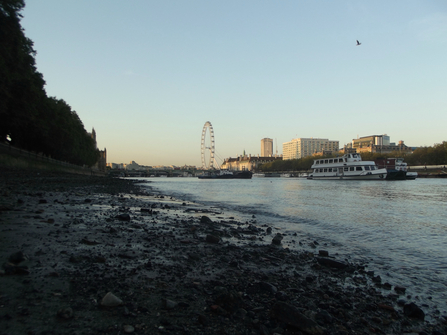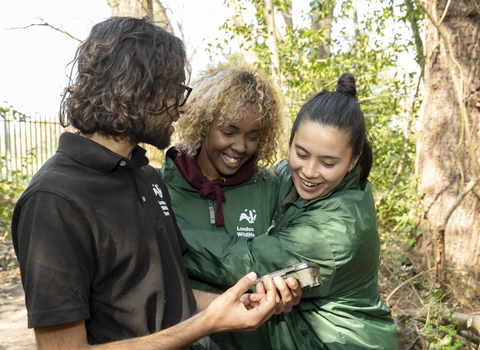One story tells of a man who discovered a lake teeming with fish, he told the villagers about it and they caught many fish including the great Abaia. The creature Abaia escaped and caused a great flood, drowning the entire village, except for one old woman who had not eaten any fish.
The story is describing a large eel, possibly a longfin eel or a marbled eel. Although just an old legend originating thousands of miles away from London, it does highlight the mysterious persona of these interesting species.
The European eel (Anguilla anguilla) is our native species found in the waterways of London. This a catadromous species meaning they are born at sea and migrate to freshwater to live their lives before returning to the sea to spawn. So much is unknown about their life that there is only one record of a spawning site – the Sargasso Sea in the Atlantic Ocean. This is the end of the adults’ lives and the beginning on the young, who will go through an amazing life cycle lasting many years: The eel hatches from the egg into a transparent larva called leptocephali and then drifts along the jet stream and North Atlantic Drift, feeding on marine snow until it reaches Europe. As the larva transitions into freshwater it then metamorphoses into a glass eel, and further upstream into elvers. At this stage the elvers must navigate many obstacles to get upstream including dams, weirs and natural structures. Once in their juvenile grounds they then develop into yellow eels and finally silver eels. Their wild lifespan is unknown, although captive specimens have lived to be over 80 years old.
Being from the East End, I think I’m in the minority who has never eaten these – a bony fish full of jelly turns my stomach. I did however develop a childhood fascination of these creatures, and not just because the eel is my name backwards. I remember regularly checking in the fishmonger’s tank to see them swimming around whenever I was in Stratford and seeing fisherman land them from the Thames. Then suddenly, I only saw them in a plastic pot on the supermarket.


